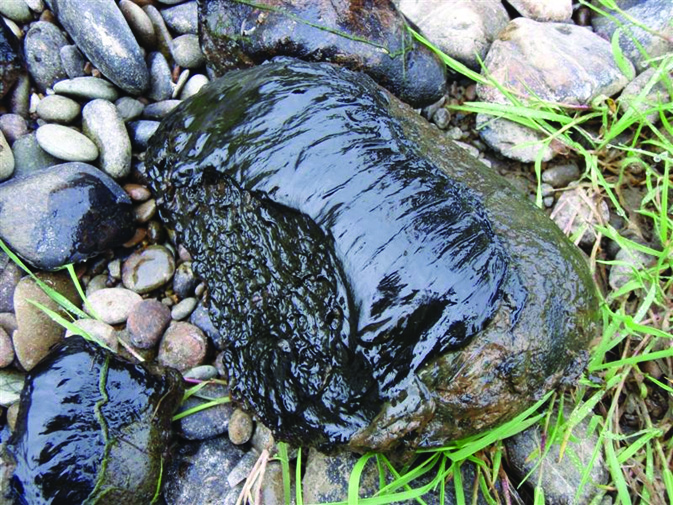
Toxic algae are naturally present in all New Zealand waterways. It’s important to know which algae in our waterways are harmful.
During warm and dry weather, toxic algae blooms can form in rivers, making the swimming sites especially dangerous for people and dogs. When ingested, a piece the size of a 50c coin is enough to kill a dog.
Blooms generally happen in rivers that have low-moderate nitrogen levels and low phosphorus levels, like Te Awa Kairangi / Hutt River.
Sediment could also be an important factor in the growth of toxic algae. Toxic algae (unlike other types of algae) can trap sediment particles and ‘suck out’ the phosphorus attached to them.
We’re trying to find ways to reduce how fast toxic algae grows, so a decent amount of rain can flush it away before a major bloom develops.
This could potentially be achieved by reducing factors that promote growth, like nutrients, sediment, the amount of sunlight and water temperature. This won’t always be possible though, as nutrient and sediment concentrations in Te Awa Kairangi / Hutt River are already very low and further reductions would be difficult.
These blooms last until there is a flushing event due to heavy rain.
Did you know?
Toxic algae in our rivers are actually not algae at all, but cyanobacteria. Cyanobacteria are naturally present in all New Zealand waterways. There are lots of types of algae and cyanobacteria that grow in our waterways, so it's important to know which ones are harmful.
How to spot Toxic Algae
Toxic algae blooms appear differently in lakes and rivers. Follow these tips to help spot it:
Rivers
- Look for black, green or brown slime on rocks, or brown or black "mats" at the river's edge that have a leathery texture and earthy/musty smell.
- If you see toxic algae, try to avoid that river site, particularly if you have a dog.
- Check the LAWA website for live updates on where it is safe to swim.
Lakes
Lakes in the Wellington region are not part of our monitoring program, as river swimming spots are much more popular. However, we encourage you to know what to look for in lakes as well as rivers.
- If the water has a "pea soup appearance", it could contain toxic algae. Discoloured, cloudy water with small green blobs suspended in it should be avoided.
Oceans
- Toxic algae is quickly deactivated by saltwater, so is not harmful once it reaches the sea.
- You should ensure the area is safe for swimming by visiting the LAWA website, as the sea can contain other harmful bacteria.
Get in touch with us at 0800 496 734 if you have spotted toxic algae in our region. It helps to take a photo and note your location before getting in touch.


Safety precautions
Dogs
Dogs are most at risk as they like the smell and taste of dried toxic algae. They are most susceptible when mats wash up at the river edges.
If there has been an alert issued, or you think you have spotted a toxic algal bloom:
- Keep your dog on a lead
- Keep your dog out of the water
- Ensure it does not eat any algal mats
If you are concerned about your dog, take it to the nearest vet immediately. Toxic algae can affect dogs within minutes in extreme cases. Make sure to tell your vet that you think it may have ingested toxic algae, so that they can give it the best treatment as quickly as possible.
People
Swallowing water containing toxic algae can make humans very sick with symptoms such as nausea, vomiting and diarrhoea. Contact can also cause irritation of the skin, eyes, nose and mouth. Keep an eye on children, as they may touch algae then put fingers in their mouth.
If you think you, or your child, are experiencing a reaction after swimming/playing in a river, seek urgent medical attention. Let your doctor know that you think you have swallowed toxic algae, so that they can inform Regional Public Health of the incident.
How we're helping
Greater Wellington works with other councils and Regional Public Health to monitor the safety of our waterways, and issue warnings when blooms occur.
Regular water quality monitoring is undertaken from mid-November through to the end of March each summer at over 80 sites. This includes online updates and signs at key sites where toxic algae occurs. People are advised to learn what toxic algae looks like, and swim elsewhere if they see it.
The data from this monitoring is used to inform the ‘safe to swim’ rating on LAWA (Land Air Water Aotearoa). Head to the LAWA website to check for current warnings.
Resources
Get in touch
- Phone:
- 0800496734
- Email:
- info@gw.govt.nz
